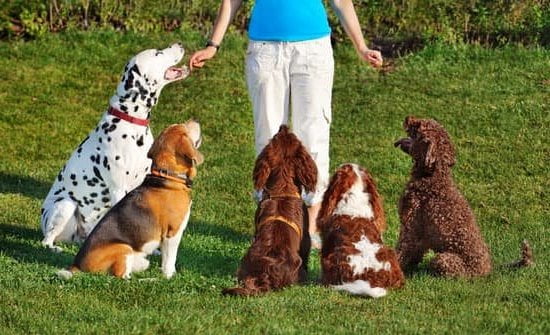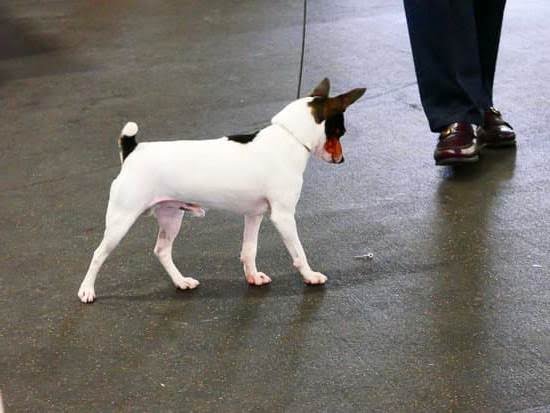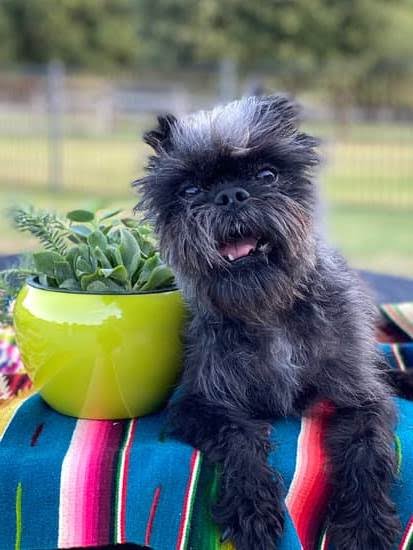Training your dog to give you their paw can be a delightful and engaging experience for both you and your furry companion. This trick not only showcases the bond between you and your dog but also promotes communication, trust, and obedience. In this article, we will explore the process of how to train your dog to give you their paw, step by step.
Positive reinforcement training is key when teaching your dog new tricks such as giving paw. By using treats, praise, and rewards, you can encourage good behavior and build a strong connection with your pet. This method focuses on rewarding desired actions rather than punishing unwanted behaviors, creating a positive learning environment for your dog.
Setting up training sessions with yummy treats and enticing rewards is essential for successful teaching. These sessions should be fun, engaging, and short to keep your dog focused and motivated. By establishing trust and clear communication through basic command training, you pave the way for a smooth process in teaching them the paw trick effectively. Stay tuned as we dive into the details of how to accomplish this training milestone with your beloved canine companion.
Understanding the Importance of Positive Reinforcement Training
Positive reinforcement training is a fundamental aspect of teaching your dog new tricks, including how to give you their paw. This method focuses on rewarding desirable behaviors rather than punishing unwanted ones, making the learning process enjoyable and effective for both you and your furry companion. Dogs respond well to positive feedback, such as treats, praise, or playtime, which helps strengthen the bond between you and your pet.
Building Trust and Confidence
By using positive reinforcement techniques like clicker training or offering tasty treats, you are creating a safe and encouraging environment for your dog to learn. This approach not only boosts their confidence but also enhances trust in their relationship with you as their trainer. When dogs associate good behavior with rewards, they are more likely to repeat those actions in the future.
Creating a Positive Learning Experience
Training sessions should be kept short and engaging to prevent your dog from becoming bored or frustrated. Make sure to choose a quiet space free from distractions where you can focus on teaching them the paw command effectively. Patience is key during this process, as every dog learns at their own pace. Remember to celebrate small victories along the way to keep motivation high for both you and your pet.
Preparing Treats and Rewards for Training Sessions
Preparation for training sessions with your dog is crucial in ensuring a successful and enjoyable experience for both you and your furry friend. When it comes to teaching your dog to give you their paw, having the right treats and rewards on hand is key to motivating them throughout the training process.
Choose High-Value Treats
When preparing treats for your training sessions, opt for high-value rewards that your dog finds especially enticing. This could be small pieces of cooked chicken, cheese, or commercial dog treats that your dog particularly enjoys. By using high-value treats, you are more likely to keep your dog engaged and eager to learn during the training.
Be Mindful of Portion Sizes
While using treats as rewards can be highly effective in training, it’s important to consider portion sizes to prevent overfeeding. Cut the treats into small, bite-sized pieces so that you can reward your dog frequently without them consuming excessive amounts of calories during the training session. You can also adjust their daily food intake accordingly to account for the additional treats they receive during training.
Utilize Verbal Praise and Affection
In addition to edible rewards, don’t forget the power of verbal praise and affection when training your dog. Dogs respond well to positive reinforcement in the form of encouraging words like “Good job.” or a gentle pat on the head. By combining edible rewards with verbal praise and physical affection, you are reinforcing good behavior and strengthening the bond between you and your furry companion during each training session.
With these tips in mind, you can effectively prepare treats and rewards for your training sessions and set yourself up for success as you embark on teaching your dog how to give you their paw. Remember that patience, consistency, and positive reinforcement are key elements in building trust, communication, and a strong relationship with your canine companion while learning this fun trick together.
Basic Command Training
Establishing trust and effective communication with your dog is crucial when it comes to teaching them new tricks, such as giving you their paw. Positive reinforcement training methods are highly recommended for building a strong bond with your furry friend.
This approach focuses on rewarding good behavior rather than punishing bad behavior, creating a positive and enjoyable learning experience for your dog. By using treats, praise, and affection as rewards during training sessions, you can motivate your dog to perform the desired behavior consistently.
Before starting the training process, it is essential to prepare treats and rewards that will keep your dog engaged and excited. Choose high-value treats that your dog finds irresistible and only use them during training sessions to maintain their interest and motivation.
Additionally, make sure to have plenty of treats on hand to reinforce good behavior immediately. Consistency is key in training, so be sure to reward your dog every time they successfully lift their paw in response to your command.
Now that you have set the stage for positive reinforcement training and gathered your training supplies, it’s time to begin basic command training with your dog. Start by practicing simple commands like “sit” and “stay” to establish trust and communication between you and your furry companion.
These foundational commands help build a solid training foundation and pave the way for more advanced tricks like giving you their paw. Through consistent practice and patience, you can create a strong bond with your dog while teaching them how to give you their paw on cue.
| Positive Reinforcement Training | Using Rewards Such as Treats, Praise, and Affection |
|---|---|
| Treat Preparation | Choosing high-value treats for motivation |
| Basic Command Training | Establishing trust through simple commands like “sit” |
Step-by-Step Guide on Teaching Your Dog to Lift Their Paw
Training your dog to give you their paw can be a fun and interactive way to strengthen the bond between you and your furry friend. This trick is not only cute and entertaining but also serves as a practical command that can come in handy in various situations. By teaching your dog to lift their paw on command, you are not only engaging their mind but also building trust and communication with them.
The key to successfully training your dog to give you their paw lies in positive reinforcement. Using treats and rewards during training sessions will motivate your dog to learn and perform the desired behavior. Make sure to have plenty of small, easily consumable treats on hand to use as incentives for each successful attempt at lifting their paw.
To begin training your dog to give you their paw, start by establishing a solid foundation of basic commands like “sit” and “stay.” This will help create a sense of trust between you and your dog, making it easier for them to follow new commands. Once this trust is established, move on to the specific steps involved in teaching them how to lift their paw on cue.
Troubleshooting Common Challenges During Training
Training your dog to give you their paw can be a fun and rewarding experience for both you and your furry friend. However, like any training process, there may be some common challenges that you encounter along the way. Here are some tips on how to address and overcome these obstacles:
- Patience is key: Remember that every dog learns at their own pace, so it’s important to be patient and consistent in your training efforts.
- Identify distractions: If your dog seems easily distracted during training sessions, try to find a quiet and familiar environment to work in.
- Adjust the difficulty level: If your dog is struggling with a certain step in the training process, go back a few steps and gradually build up to the more challenging tasks.
It’s also important to keep in mind that every dog is unique, so what works for one may not work for another. Don’t get discouraged if progress seems slow – continue to reinforce positive behavior and celebrate small victories along the way. Remember, consistency and positive reinforcement are key elements in successful training.
Another common challenge during paw training can be getting your dog to lift their paw consistently without prompting. In this case, it can be helpful to use a hand signal along with the verbal command to indicate what you want them to do. By pairing the two together consistently during training sessions, your dog will start associating the hand signal with lifting their paw.
By being patient, consistent, and adaptable in your approach, you can troubleshoot common challenges during paw training and help your dog master this fun trick. With time and practice, both you and your furry companion will enjoy successfully performing this adorable gesture together.
Reinforcing the Paw Command in Various Situations
Once your dog has mastered the basic command of giving you their paw, it is important to reinforce this behavior in various situations. This will help solidify their understanding of the command and ensure that they can perform it reliably regardless of the environment or distractions present.
Practice asking for their paw in different locations around the house, during walks, at the park, or even when visitors come over. By doing so, you are teaching your dog to generalize the command and respond to it consistently no matter where they are.
Another way to reinforce the paw command is by incorporating it into your daily interactions with your dog. For example, before giving them a treat or meal, ask them to give you their paw as a way to earn the reward.
You can also use the command during grooming sessions, before putting on their leash for a walk, or as a part of playtime activities. By integrating the paw command into various situations throughout your dog’s day-to-day life, you are reinforcing their training and strengthening the bond between you and your furry companion.
Additionally, remember to continue using positive reinforcement techniques such as praise, treats, and toys whenever your dog successfully gives you their paw. Consistency is key when it comes to reinforcing training commands, so be sure to stay patient and persistent in rewarding your dog for good behavior. With practice and repetition in different situations, your dog will become more confident in performing the paw command on cue and will eagerly show off this fun trick whenever asked.
Celebrating Success
Once your dog has mastered the basic command of giving you their paw, it’s time to take their training to the next level by gradually increasing difficulty and adding flair to the trick. This not only challenges your canine companion mentally but also adds an element of fun and excitement to your training sessions.
By continuously pushing the boundaries of what they can do, you’ll not only strengthen the bond between you and your furry friend but also keep them engaged and eager to learn more.
To make things more interesting for your dog, try incorporating different surfaces or textures for them to place their paw on when performing the trick. This could include using a pillow, a small platform, or even your own hand at varying heights. By introducing these new elements, you’re not only testing their ability to follow commands in different scenarios but also helping them adapt and problem-solve while still having fun.
Another way to celebrate success in training your dog to give you their paw is by incorporating distractions into the mix. Start training in environments with mild distractions such as other pets or family members nearby, then gradually increase the level of distractions as your dog becomes more adept at executing the trick.
This will help strengthen their focus and impulse control while reinforcing their ability to perform the command regardless of external stimuli. Remember, consistency is key when it comes to training, so be patient and always praise and reward your dog for their efforts.
- Introduce different surfaces or textures for paw placement
- Incorporate mild distractions during training sessions
- Gradually increase difficulty levels as your dog progresses
Final Tips for Maintaining Paw Training Success and Bonding With Your Dog
In conclusion, teaching your dog to give you their paw is not only a fun trick but also a practical skill that can strengthen the bond between you and your furry friend. Using positive reinforcement training methods is essential in ensuring a successful training experience. By rewarding good behavior with treats and praise, you are encouraging your dog to continue learning and improving.
When preparing for training sessions, make sure to have plenty of treats and rewards on hand to motivate your dog. Establishing trust and clear communication through basic command training sets the foundation for teaching more complex tricks like giving paw. Remember to be patient and consistent in your approach, as every dog learns at their own pace.
Following a step-by-step guide on how to teach your dog to lift their paw can help break down the process into manageable steps. Troubleshooting common challenges during training is important in addressing any obstacles that may arise. Remember to reinforce the paw command in various situations to ensure that your dog understands and can perform the trick reliably.
Finally, celebrate successes by gradually increasing difficulty and adding flair to the trick, making it a fun and engaging experience for both you and your canine companion. By implementing these final tips for maintaining paw training success, you are not only strengthening the bond with your dog but also enriching their life through mental stimulation and positive interactions.
Frequently Asked Questions
How Do You Train a Dog to Give You a Paw?
Training a dog to give you their paw can be done through positive reinforcement techniques. Start by holding a treat in your hand near their paw and say the command “paw.” When they lift their paw to touch your hand, reward them with the treat and praise. With consistent practice, they will learn to associate the command with the action.
Why Won’t My Dog Give Me Her Paw?
There could be various reasons why your dog is not giving you her paw. It’s possible that she doesn’t understand what you are asking for or hasn’t been trained to do so.
Some dogs may also feel uncomfortable or threatened when their paws are touched. It’s important to assess her body language and reactions to determine the reason behind it.
Should I Let My Dog Paw Me?
Whether or not you should let your dog paw you depends on the context and training. If your dog is offering their paw as a way of seeking attention, it’s ultimately up to you whether you want to indulge this behavior.
However, if they are doing it excessively or in an unwanted manner, you can work on redirecting this behavior through training exercises to establish boundaries and reinforce other commands.

Welcome to the blog! I am a professional dog trainer and have been working with dogs for many years. In this blog, I will be discussing various topics related to dog training, including tips, tricks, and advice. I hope you find this information helpful and informative. Thanks for reading!





